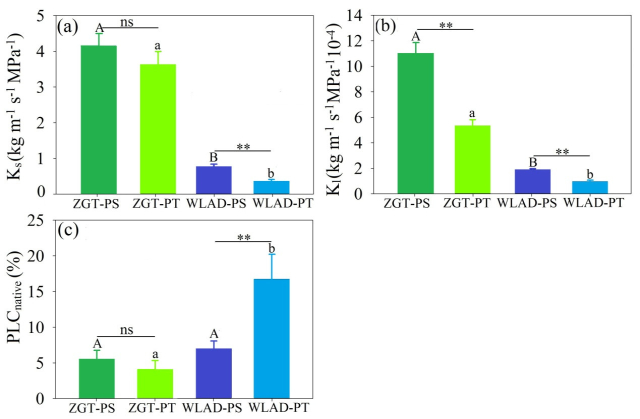New Discoveries Made by Scientists on Ecophysiology of Declining Shelter Forests in Horqin Sandy Land
Recently, researchers at the Institute of Applied Ecology Chinese Academy of Sciences (CAS) and their collaborators investigated the patterns of growth decline and the underlying physiology of Pinus sylvestris var. mongolica (Mongolian pine) and Pinus tabulaeformis (Chinese pine) in Horqin Sandy Land (HSL), i.e. a key area of land desertification control where the two studied species are commonly used for afforestation.
This investigation used a combination of tree-ring analysis and measurements in water-related physiology. Particularly, the association between tree-ring growth responses to drought and xylem hydraulics of the two species at two sites of HSL differing in climate regimes was analyzed.
This investigation aimed at examining the potential impacts of climate warming-related aridification on tree performances using a space-for-time substitution approach.
Tree-ring analyses indicated greater degrees of growth decline in recent years in both pine species at the semiarid site than at the semi-humid site. Both pine species suffer from stronger limitation in water transport when the environment gets drier (Figure 1), i.e. exhibiting lower water transport efficiencies and higher risks of hydraulic failure in the drier site.
Moreover, the results suggest that Mongolian pine, the currently most widely used trees to create shelterbelt plantations in desertified areas of northern China, is more susceptible to decline than Chinese pine as the climate becomes hotter and drier, although the former species has a higher growth rate than the latter one.
The investigation indicates that hydraulic failure can be an important mechanism in mediating the commonly observed decline and dieback of pine trees in water-limited environments of northern China. It also suggests that Chinese pine may be a better choice to replace Mongolian pine as the main tree species in plantations of the study area with changed climate regimes in the future.
This work entitled “Greater risk of hydraulic failure due to increased drought threatens pine plantations in Horqin Sandy Land of northern China” has been recently published in Forest Ecology and Management.

Figure 1. Sapwood area-specific (Ks) and leaf area-specific (Kl) stem hydraulic conductivities, and native percentage loss of hydraulic conductivity (PLCnative) for P. sylvestris var. mongolica (PS) and P. tabuliformis (PT) in Zhanggutai (ZGT) and Wulanaodu (WLAD), respectively (Image by LI Mingyong).
Email: yueqian@iae.ac.cn
Publication Name: LI Mingyong et al.



